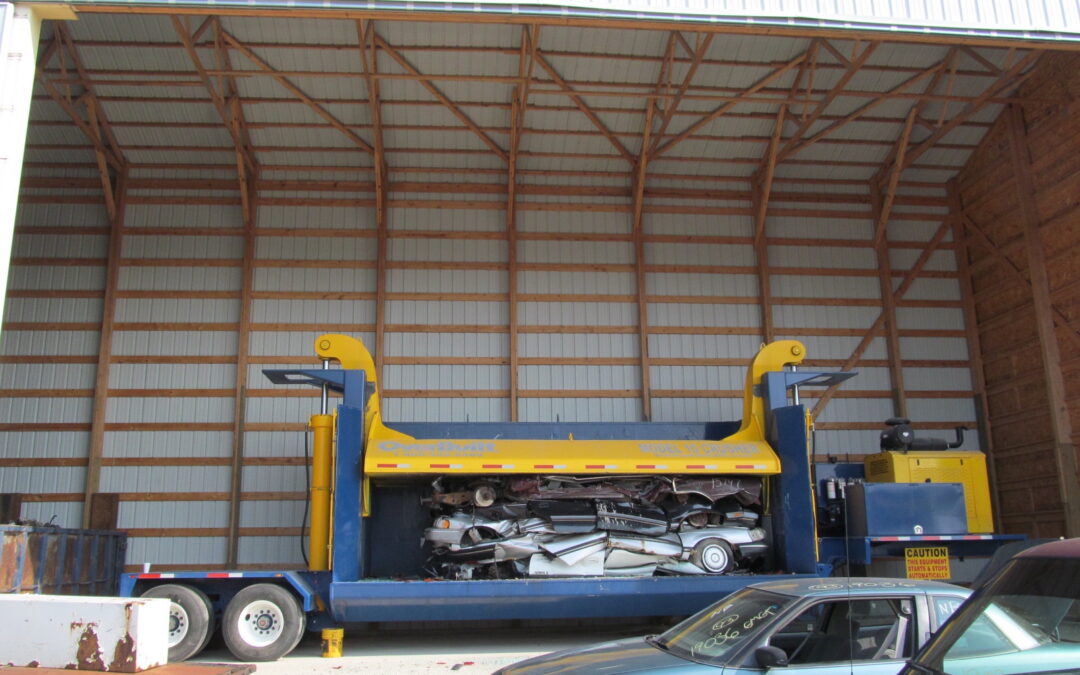A standard car crusher is a massive machine used to flatten an automobile. It uses hydraulic pistons to drive a metal crushing plate downward vertically with generated force measuring 2,000 psi, reducing a car to a height of one to two feet thick. Caution, Warning, and Danger decals are displayed on the machine to provide instructions for safe and correct operations. Only trained and authorized persons should operate the machine. To be qualified, the operator must understand the written instructions supplied by the manufacturer, fully understand the function of all controls, indicators, and instruments, know the safety rules and regulations of the job site and have training in the operation of the crusher.
Discussion Points:
• Only trained and authorized persons should operate the machine;
• Vehicles must be prepared before they are crushed;
• Clean, maintain, and inspect the crusher regularly;
• Wear safety glasses and ear protection at all times when operating or standing near the
crusher;
• Safe operation of the crusher is the operator’s responsibility.
Discussion:
Basic rules and precautions must be observed, best management practices followed, and periodic inspections conducted of the equipment to prevent injury to personnel and damage to equipment and property.
Vehicles must be prepared before they are crushed. They must be completely drained of fluids and stripped of other hazardous materials. If fluids are not drained before the vehicle is crushed and are allowed to mix or spill, these dangerous substances can cause soil, groundwater, surface water, and stormwater contamination, and must be treated as hazardous waste and require disposal using a licensed hazardous waste transporter.
Study the manual before operating the crusher. If your crusher is equipped with remote control, refer to that part of the manual for additional precautions. Inspect the crusher regularly, including the hydraulic system, for leaks and worn or damaged hoses, the fluid levels before starting the engine, and keep the crusher clean. Immediately repair or replace any worn or damaged parts before operating the crusher, and keep maintenance records. Position the crusher on a self-contained concrete pad or another impervious surface to contain fluids. Collect residual crusher fluids in a spill-proof container and manage the mixture as hazardous waste. Keep the crusher clean regularly by wiping off accumulated oil and grease, removing dirt and debris from the crushing area, cleaning up incidental spills immediately, and properly disposing of the soiled cleaning materials.
Do not operate the crusher near or under power lines without visually inspecting around the crusher for other personnel or having a clear view of the machine. Do not reach in or across moving parts or move the crusher unless the crushing chamber is empty and the lid is in the down position. Safety glasses and ear protection must be worn when operating or standing near the crusher. Safe operation of the crusher is the operator’s responsibility.
As always, be safe out there!


Recent Comments